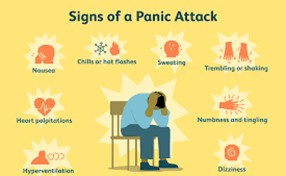A nurse is caring for a client who is taking disulfiram for alcohol use disorder and reports ingestion of alcohol.
For which of the following adverse effects should the nurse monitor?
Headache.
Hypertension.
Tinnitus.
Insomnia.
The Correct Answer is C
Choice A rationale:
Headache is a common adverse effect of disulfiram when alcohol is consumed. It is part of the adverse reaction created by the drug to deter individuals from drinking. While headache is a known symptom, tinnitus is a more specific and distinctive adverse effect associated with disulfiram use.
Choice B rationale:
Hypertension is not a common adverse effect of disulfiram. Disulfiram does not directly impact blood pressure. Its primary action is to cause an adverse reaction when alcohol is consumed.
Choice C rationale:
Tinnitus (ringing in the ears) is a known adverse effect of disulfiram when alcohol is ingested. Disulfiram inhibits the breakdown of acetaldehyde, leading to an accumulation of this toxic substance in the body. Tinnitus is one of the symptoms of this toxic reaction and is a significant concern in individuals taking disulfiram for alcohol use disorder.
Choice D rationale:
Insomnia is not a common adverse effect of disulfiram. Disulfiram works by creating an unpleasant reaction when alcohol is consumed, which deters individuals from drinking. This reaction does not typically manifest as insomnia.
Nursing Test Bank
Naxlex Comprehensive Predictor Exams
Related Questions
Correct Answer is ["2"]
Explanation
To calculate how many tablets of levothyroxine the nurse should administer, we'll need to convert the dose to the same unit as the available tablets. Here's the step-by-step process:
Convert the desired dose to milligrams (mg): 50 micrograms (mcg) = 50 / 1000 mg (since 1 mg = 1000 mcg) 50 mcg = 0.05 mg
Now, find out how many tablets of 0.025 mg each are required to achieve the desired dose: Number of tablets = Desired dose (in mg) / Tablet strength (in mg) Number of tablets = 0.05 mg / 0.025 mg Number of tablets = 2 tablets
Therefore, the nurse should administer 2 tablets per dose.
Correct Answer is B
Explanation
A. Incorrect. Encouraging the client to watch television might not provide the calming presence and support needed during a panic attack.
B. Correct. Sitting with the client and providing a sense of security can help them feel more grounded and supported during the panic attack.
C. Incorrect. Atomoxetine is not typically used to treat acute panic attacks. It's a medication used for attention deficit hyperactivity disorder (ADHD).
D. Incorrect. Teaching the client how to meditate might be beneficial in the long term, but during an acute panic attack, the client may not be receptive to learning new techniques.

Whether you are a student looking to ace your exams or a practicing nurse seeking to enhance your expertise , our nursing education contents will empower you with the confidence and competence to make a difference in the lives of patients and become a respected leader in the healthcare field.
Visit Naxlex, invest in your future and unlock endless possibilities with our unparalleled nursing education contents today
Report Wrong Answer on the Current Question
Do you disagree with the answer? If yes, what is your expected answer? Explain.
Kindly be descriptive with the issue you are facing.
